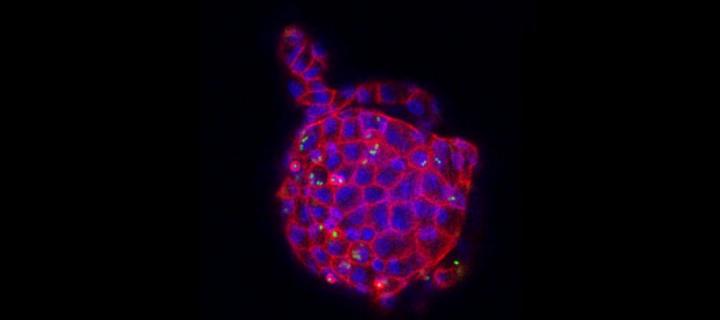Inside-out mini-guts aid research into poultry
Development of a 3D model from stem cells will support studies into common infections and chicken immunity.

Scientists have developed inside-out miniature intestines, also known as enteroids, grown from stem cells, for researching gut biology in poultry.
The three-dimensional tissue cultures, mimicking the chicken gut, are composed of many cell types and will enable researchers to study poultry health and disease including infections such as Salmonella and bird flu.
They will also support research to better understand the immune response to disease in chickens.
The development, following a decade of research in the area of organoids, should accelerate studies into gut health and diseases that affect birds around the world, and reduce the number of animals used in research.
They may also support the testing of feed additives, vaccines and drugs targeted at the chicken gut and determine gut health in chicken breeds through collaborative work with industrial partners.
Immune insights
Scientists have created the mini-guts with the internal gut surface on their exterior. This accessible surface enables researchers to easily expose the tissue to disease-causing organisms and feed additives, and then to monitor the effects.
The enteroids are the first mini-gut models to naturally include cells from the immune system, enabling a more comprehensive understanding of the chicken’s response to infection.
Organoid development depends on the ideal growth environment, typically inside a protein-rich gel dome surrounded by growth factor-supplemented liquid cell culture. In these conditions, stem cells can follow their own genetic instructions to self-organise and form structures that resemble miniature intestines.
The growth conditions in this case enabled a reverse of the usual structure, with the enteroids growing inside-out.
Chicken enteroids were challenging to develop as they do not grow well in typical conditions used for mammal enteroids. Roslin scientists discovered that the chicken enteroids would only properly develop into mini-guts when floating in liquid culture, with the gel dome and many of the typical culture supplements removed.
Studies into the gastrointestinal systems of birds have long been hampered by a lack of cell culture tools. But with the development of these novel mini-guts we can now study diseases that are of importance to the poultry industry, including zoonotic infections such as Salmonella and flu.
Inside-out organoids will support studies to develop our understanding of how gut tissue in chickens responds to for example disease, feed additives, nutrition and heat stress, saving time and reducing the number of animals needed for this process.
The study was carried out with funding from the BBSRC and published in Communications Biology.
** The Roslin Institute receives strategic investment funding from the Biotechnology and Biological Sciences Research Council and it is part of the University of Edinburgh’s Royal (Dick) School of Veterinary Studies. **
Related links
Professor Lonneke Vervelde on chicken health


